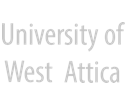Web-based collaborative learning and knowledge sharing in informal business networks
Abstract
Keywords
References
Angehrn, A.A., Gibbert, M. and K. Nicolopoulou (2003), Special Issue on "Understanding Learning Networks", European Management Journal, Vol. 21, No.5, October.
Berners-Lee, T. (1998). Metadata Architecture. Available through the internet: http://www.w3.org/DesignIssues/Metadata.html [Retrieved 12/6/2006].
Dirckinck-Holmfeld, L., Jones, C. and Lindström, B. (2009) Analysing Networked Learning Practices in Higher Education and Continuing Professional Development. Rotterdam: Sense Publishers.
Downes, S. (2008). The Future of Online Learning: Ten Years On. In Downes, S., Half an Hour, Sunday, November 16, 2008. Available through learning-ten-yearson_16.html [Retrieved 1/9/2011].
Dublin Core Metadata Initiative. Available through the internet: http://dublincore.org/. [Accessed 10/9/2007].
Duval E., Hodgins W., Sutton, S. and Weibel, S. (2002).. Metadata Principles and Practicalities, D-Lib Magazine 8. Available through the internet: http://www.dlib.org/dlib/april02/weibel/04weibel.html [Retrieved 12/6/2006].
Garrett J.J. (2005). Ajax: A New Approach to Web Applications. Available through the internet: http://www.adaptivepath.com/ideas/e says/archives/000385.php. [Retrieved 2008-06-19].
Goodyear, P., Banks, S., Hodgson, V. and McConnell, D. eds (2004). Advances in Research on Networked Learning. London: Kluwer Academic Publishers.
IEEE LOM, (2002). Draft Standard for Learning Object Metadata, IEEE Learning Technology Standards Committee, IEEE 1484.12.1-2002 [Retrieved 15/7/2002].
Keeble D.; Wilkinson F. (1999). Collective Learning and Knowledge Development in the Evolution of Regional Clusters of High Technology SMEs in Europe, Regional Studies. The Journal of the Regional Studies Association, Volume 33, Number 4, 1 June 1999 , pp. 295-303(9).
Koper R. (2009). Learning Network Services for Professional Developments, Springer publishers, XII, 414 p., 130.
Kraan, W. (2003). No one standard will suit all. The Centre for Educational Technology Interoperability Standards. Available through the internet: http://www.cetis.ac.uk/content/20030513175232 [Retrieved January, 2004].
Mackey, J. and Evans T. (2011). Interconnecting Networks of Practice for Professional Learning. International Review of Research in Open and Distance Learning, Vol 12, No 3.
Nicolopoulou, K., Angehrn, A.A. and Gibbert M. (2002), Collaboration, Governance and Technology in Inter-Organizational Learning Networks: Evidence from a Cross-Case Analysis, Proceedings of the 4th Triple Helix Conference, Copenhagen, Denmark.
Nilsson,M., Palmér,M. and Naeve A. (2002). Semantic Web Metadata for e-Learning - Some Architectural Guidelines, WWW2002 The 11th Intnl www Conference. Available through the internet: http://www2002.org/CDROM/alternate/744/ [Retrieved 3/11/2003].
Josefa Ruiz-Mercader, J., Meroño-Cerdan, A.L., Sabater-Sánchez, R. (2006). Information technology and learning: Their relationship and impact on organisational performance in small businesses. International Journal of
Information Management, Volume 26, Issue 1, February 2006, Pages16-29.
Sammons, P., et al (2007),Participation in Network Learning Community Programmes and Standards of Pupil Achievement: Does it make a Difference? School Leadership & Management 27.3: 213.
Siemens G., Tittenberger, P. (2009). Handbook of Ememrging Technologies for Learning. Available through the internet: http://umanitoba.ca/learning_technologies/cetl/HETL.pdf [Accessed 10/3/2010].
Siemens, G. (2005). Connectivism: A Learning Theory for the Digital Age. International Journal for Instructional Technology and Distance Learning, January 2005.
Sorensen, E. K. (2005). Networked eLearning and collaborative knowledge building: Design and facilitation. Contemporary Issues in Technology and Teacher Education, 4(4), 446–455.
Wenger, E. (1998). Communities of practice. Learning, meaning, and identity.Cambridge: Cambridge University Press.
Whitten, J. L.; Lonnie D. Bentley, Kevin C. Dittman. (2004). Systems Analysis and Design Methods. 6th edition. ISBN 025619906X.
Wilson, B.G., Ludwig-Hardman, S., Thornam, C. L., and Dunlap, J. C. (2004). Bounded community: Designing and facilitating learning communities in formal courses. International Review of Research in Open and Distance Learning, 5(3), 1–22.
World Wide Web Consortium (W3C). http://www.w3.org/RDF/ [Accessed 3/11/2008].
DOI: 10.18780/jiim.v1i2.3054
Refbacks
- There are currently no refbacks.






